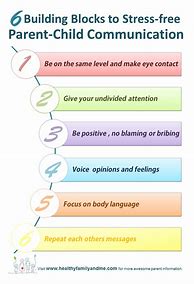How To Improve Parent-Child Communication Skills For Better Relationships
Navigating the complex and ever-changing terrain of parent-child communication can be challenging, but it’s a vital aspect of building strong and lasting relationships. Open and honest communication fosters mutual understanding, empathy, and respect, laying the foundation for a healthy family dynamic. In this article, we’ll explore practical strategies and effective techniques to enhance communication skills between parents and children.
Improving Communication
Understanding the Challenges of Parent-Child Communication: Why Is Communication Often Difficult?
The communication gap between parents and children can be wide and complex, often stemming from various factors. Generational differences, evolving social norms, and varying life experiences can lead to misunderstandings and misinterpretations. Furthermore, emotional maturity levels, differing perspectives, and the anxieties of everyday life can create barriers that impede effective communication.
Building a Safe and Open Environment: Reducing Barriers to Talking
Creating a safe and open environment is crucial for facilitating honest and meaningful conversations. This means establishing a space where both parents and children feel comfortable expressing their thoughts and feelings without fear of judgment or ridicule. Encourage open and respectful communication by actively listening to each other’s perspectives.
Active Listening: Building Empathy and Understanding
Active listening is a fundamental skill in effective communication. It involves paying full attention to what the other person is saying, both verbally and nonverbally. Show genuine interest by maintaining eye contact, nodding, and asking clarifying questions. Avoid interrupting or offering unsolicited advice, as this can make the other person feel unheard.
Developing Effective Speaking Skills: Expressing Feelings and Expectations Clearly
Learning to express feelings and expectations clearly and assertively is essential for effective communication. Encourage children to use “I” statements to express their emotions and needs. For example, instead of saying “You’re always making me feel bad,” they could say “I feel hurt when you say things like that.”
Accepting and Respecting Different Perspectives: Cultivating Respect and Tolerance
Disagreements and differing viewpoints are inevitable in any relationship, but it’s important to approach these differences with respect and tolerance. Recognize that everyone has their own unique perspective, and try to see things from the other person’s point of view. Avoid labeling or judging their opinions, and focus on understanding their reasoning.
Building Strong Relationships
Building Emotional Connection: Forging Deeper Bonds
Emotional connection is the cornerstone of a strong and healthy relationship. Find opportunities to connect on an emotional level, whether through shared experiences, heartfelt conversations, or simply spending quality time together. Encourage open and honest expressions of affection, appreciation, and support.
Building Trust and Respect: Creating a Healthy Relationship
Trust is a key ingredient in a healthy parent-child relationship. Be honest and transparent in your interactions, and keep your promises. Respect your child’s opinions and decisions, even if you don’t agree with them. This will demonstrate that you value their autonomy and opinions.
Resolving Conflict Constructively: Addressing Differences Positively
Conflict is an inevitable part of life, but the way we handle it can have a significant impact on our relationships. Encourage open and respectful communication during disagreements. Focus on the issues at hand, and avoid personal attacks. Seek to find solutions that work for both parties.
Creating Shared Traditions and Routines: Strengthening Family Bonds
Shared traditions and routines provide a sense of belonging and connection. Establish family rituals, such as regular mealtimes, game nights, or weekend outings. These shared experiences will help create lasting memories and strengthen family bonds.
Developing Conflict Resolution Skills: Resolving Differences Peacefully
Developing conflict resolution skills can help navigate disagreements constructively. Teach children effective communication techniques, such as active listening, compromise, and finding solutions that work for everyone. Encourage them to express their feelings and needs assertively but respectfully.
Conclusion
Improving parent-child communication is an ongoing process that requires effort and commitment from both parties. By implementing the strategies outlined in this article, you can create a more open and understanding environment for communication, leading to stronger, more fulfilling relationships.
FAQ
What are some common communication roadblocks between parents and children?
Common communication roadblocks include generational gaps, differing life experiences, emotional maturity levels, and the anxieties of everyday life.
How can I encourage my child to open up to me?
Create a safe and open environment where your child feels comfortable expressing themselves without fear of judgment. Use active listening skills to show that you are genuinely interested in what they have to say.
What are some tips for resolving conflict constructively?
Approach conflict with respect and tolerance. Focus on the issues at hand and avoid personal attacks. Seek to find solutions that work for both parties.
How can I build trust and respect in my relationship with my child?
Be honest and transparent in your interactions and keep your promises. Respect your child’s opinions and decisions, even if you don’t agree with them.
Internal Links:
External Links:
- The Importance of Communication in Parent-Child Relationships
- Tips for Communicating with Teenagers
Note: Please replace the bracketed links above with actual URLs of relevant articles. You can use this as a starting point and expand upon it with your own research. Remember to review and edit the article for clarity, flow, and SEO optimization.

